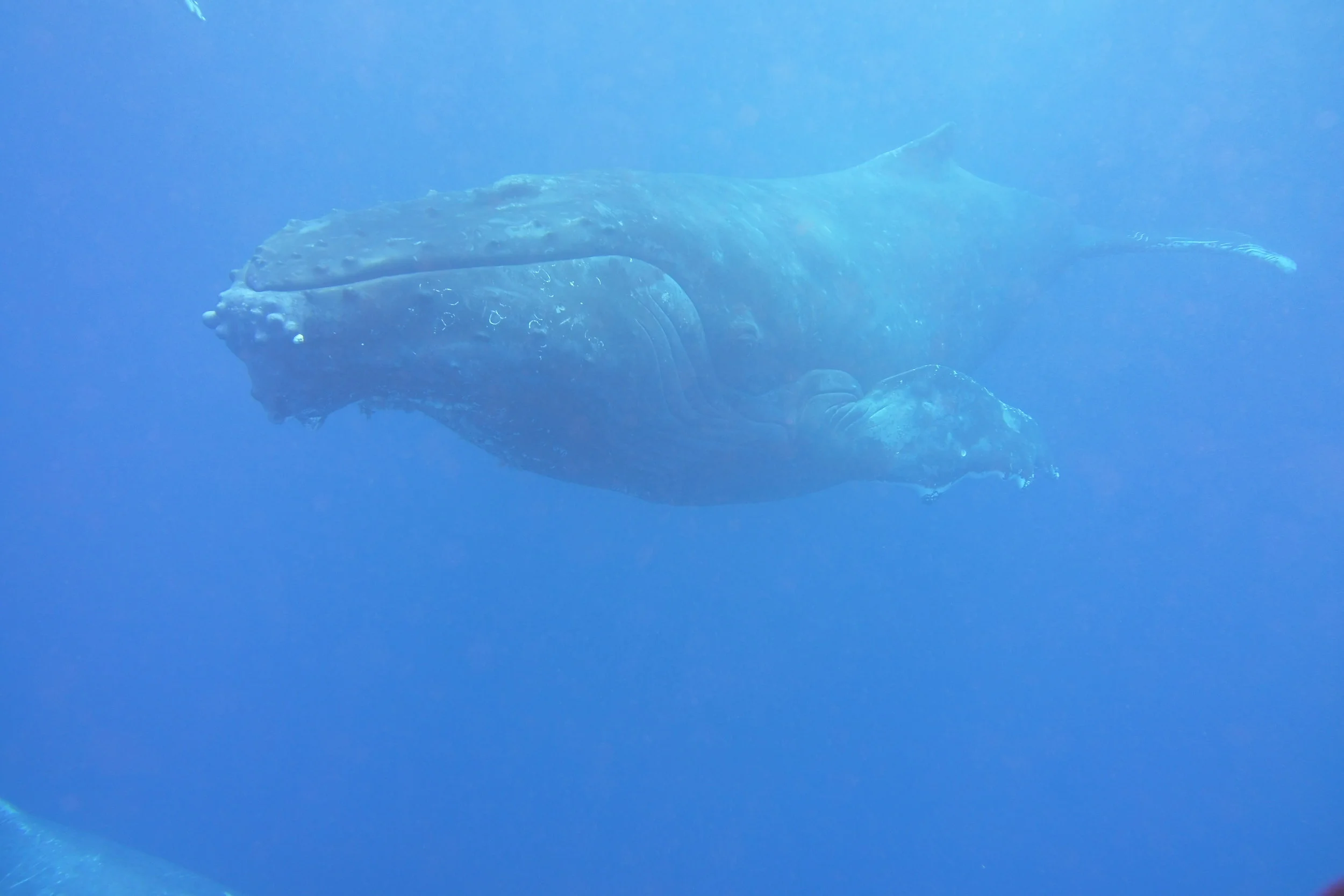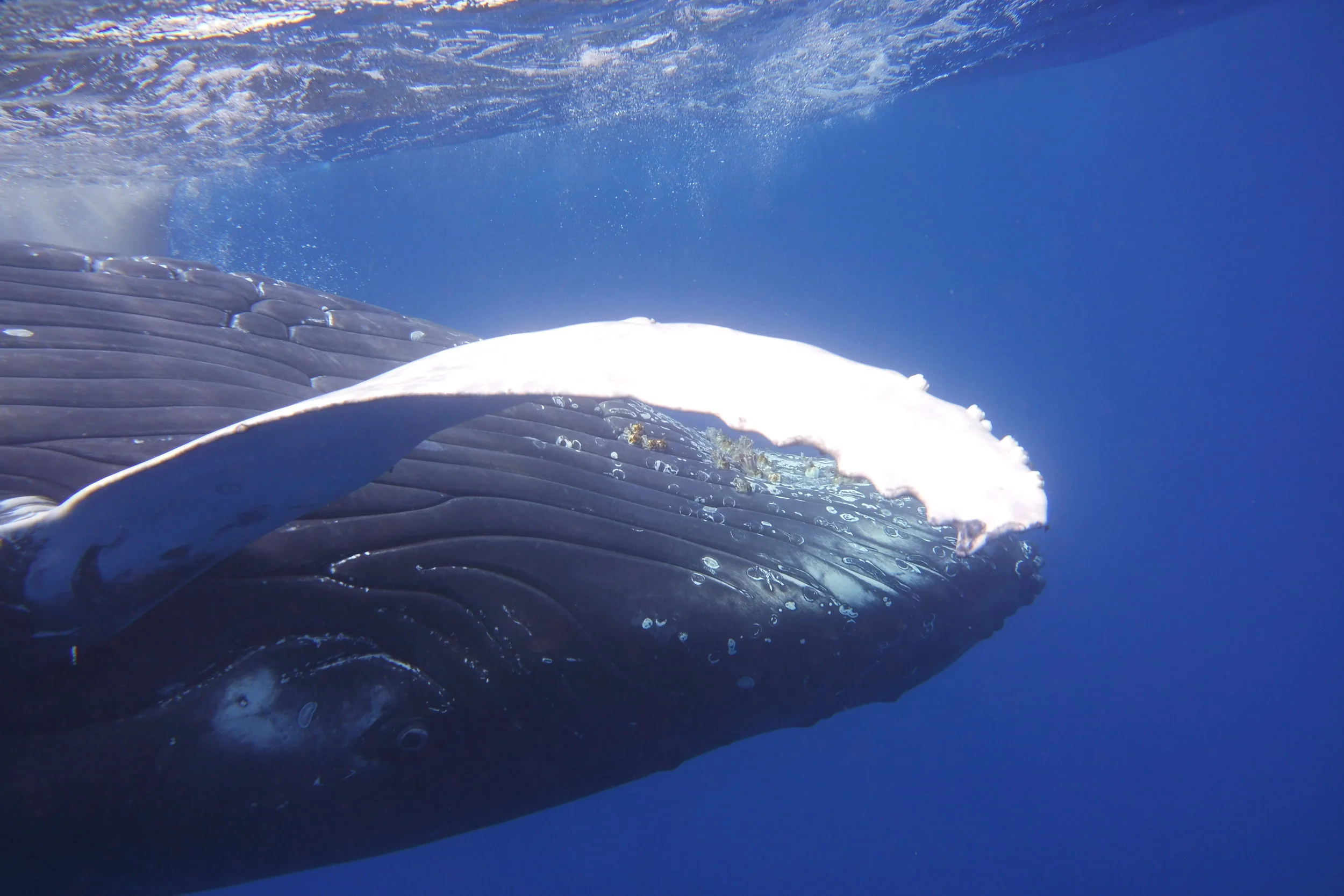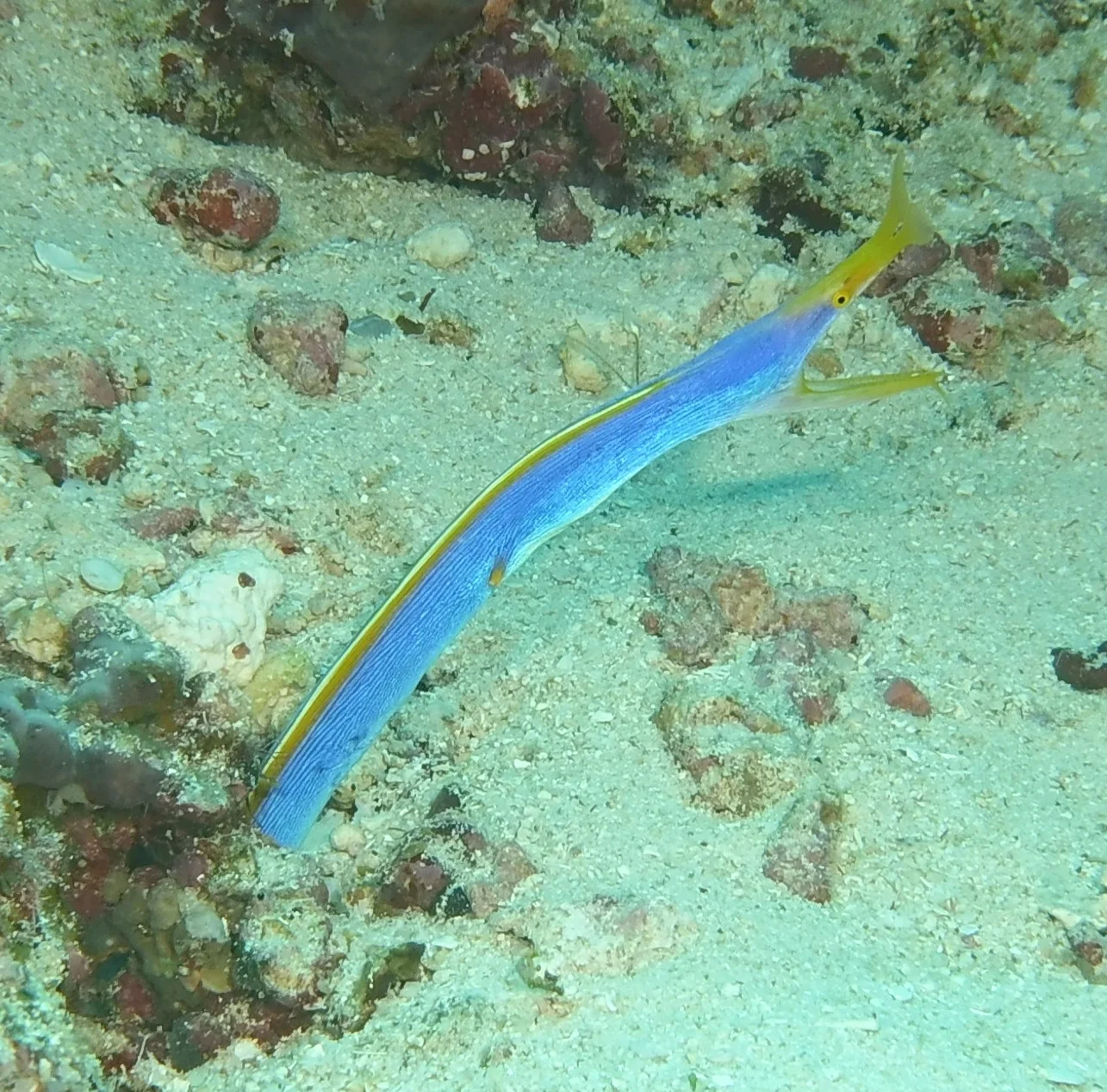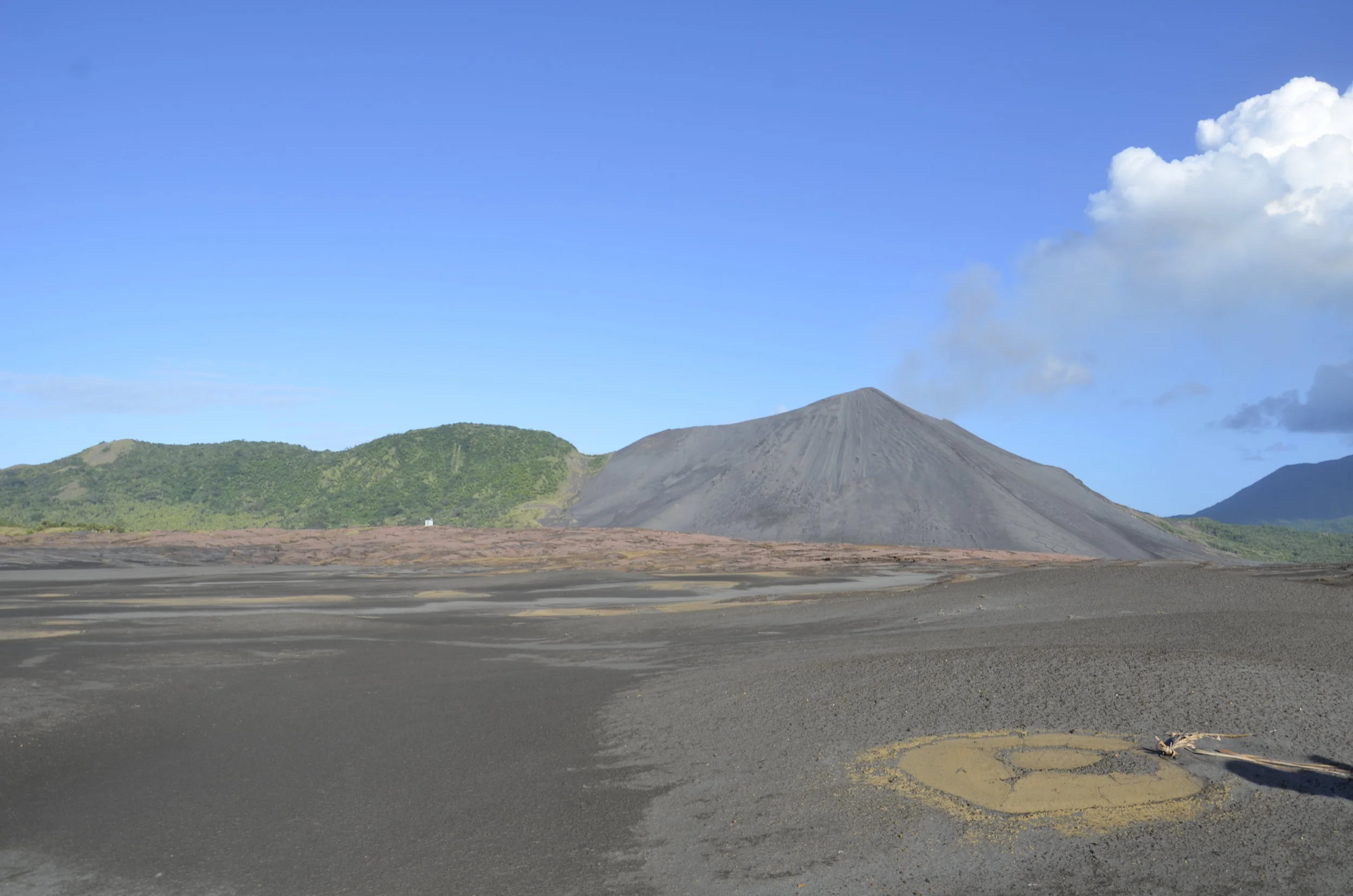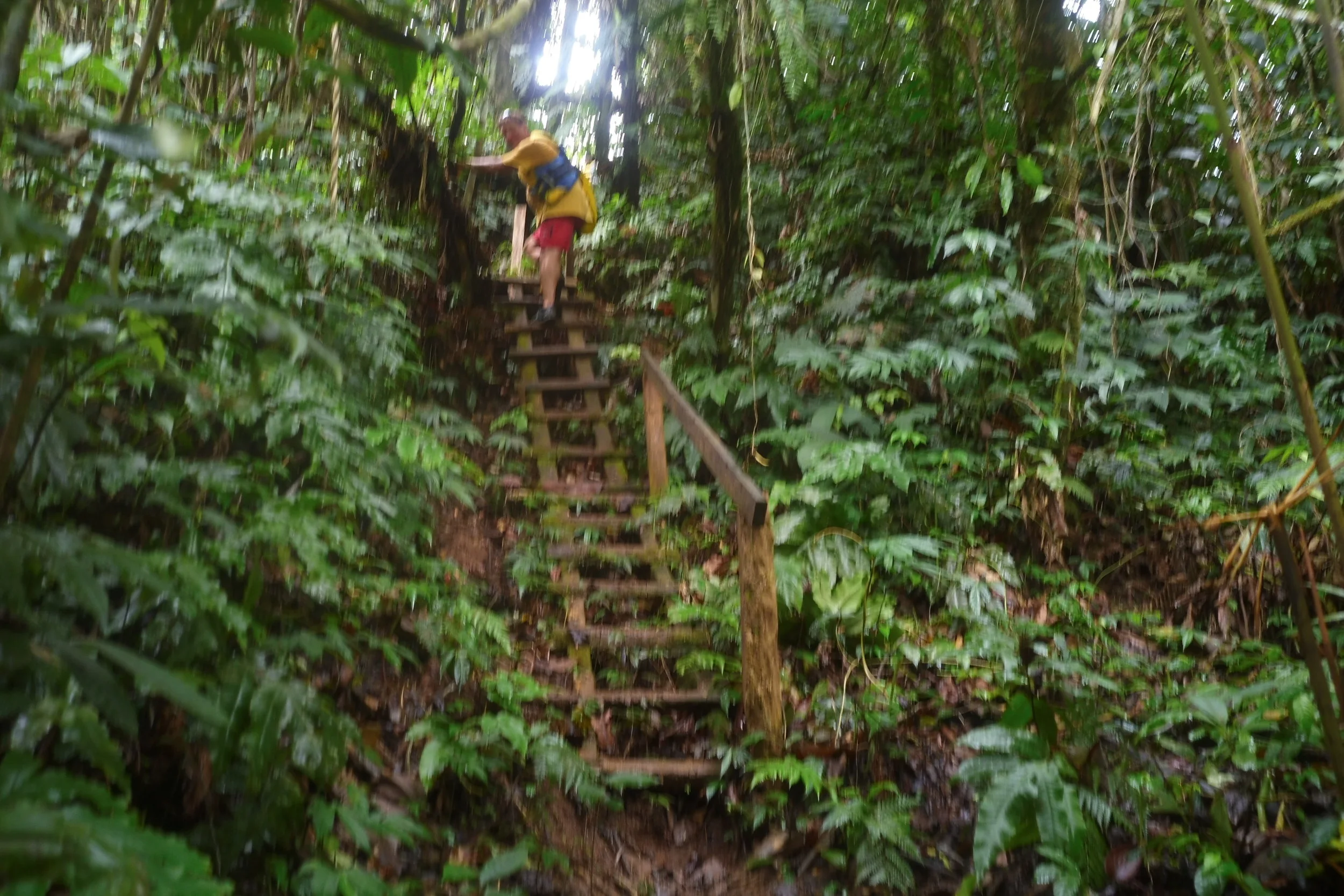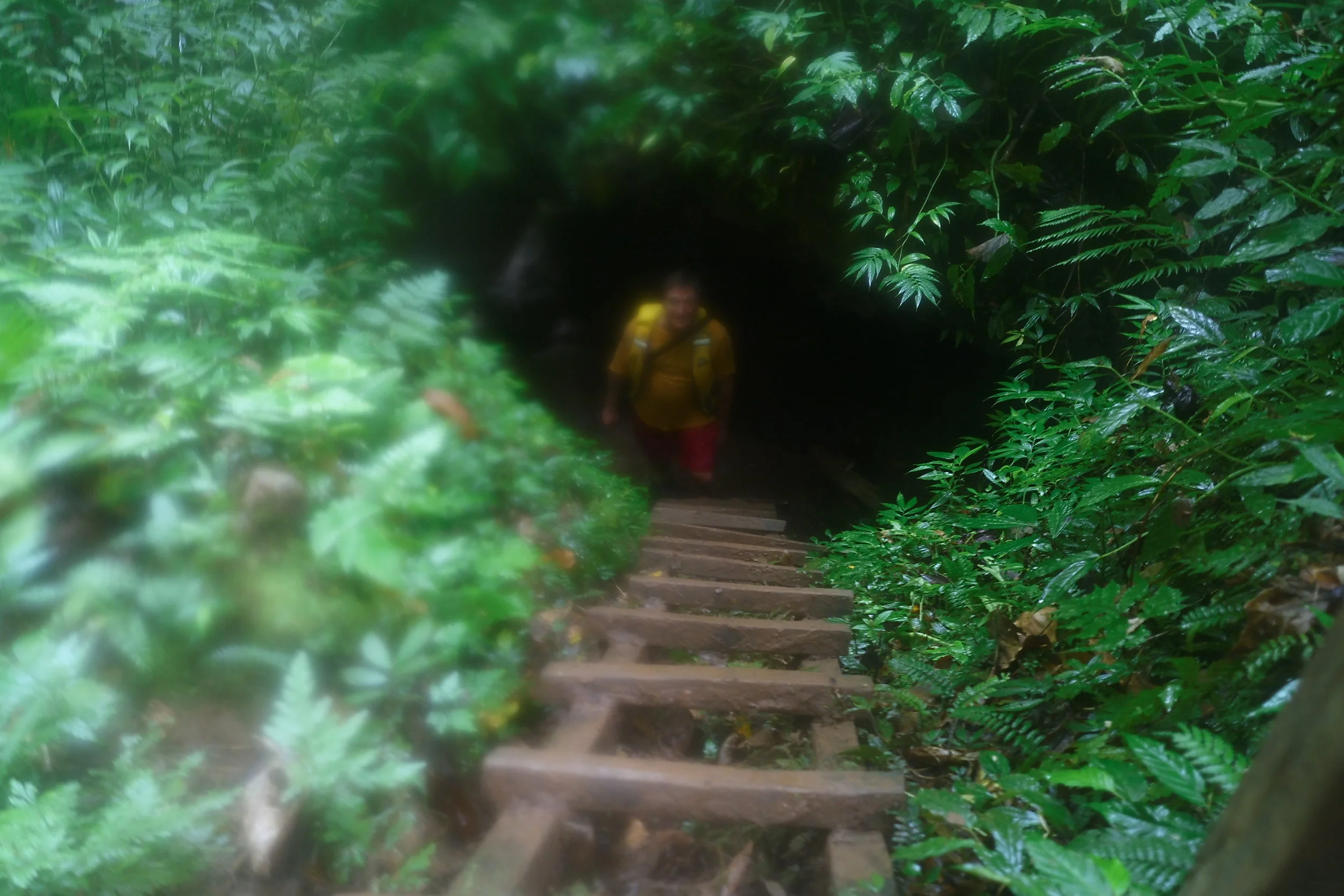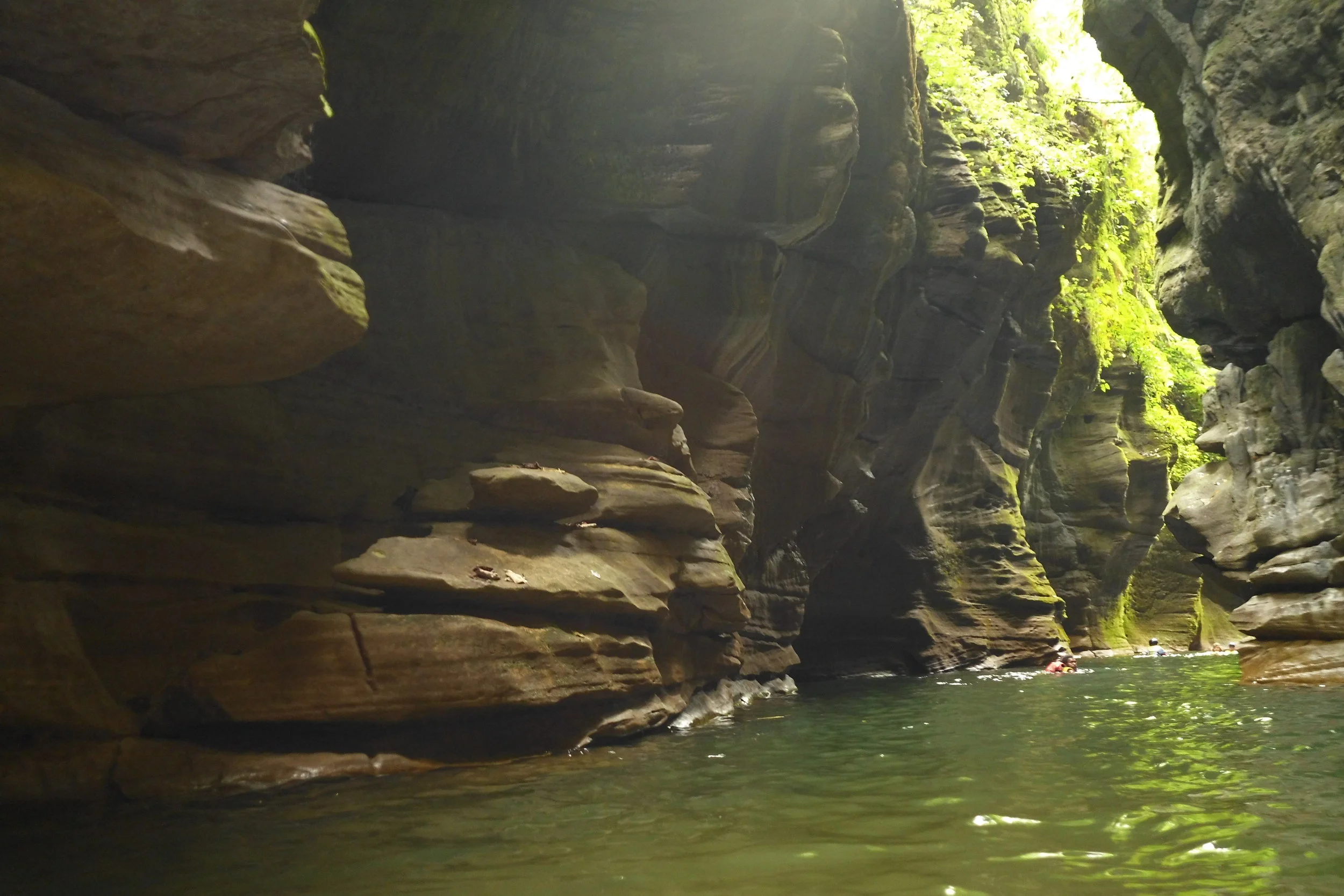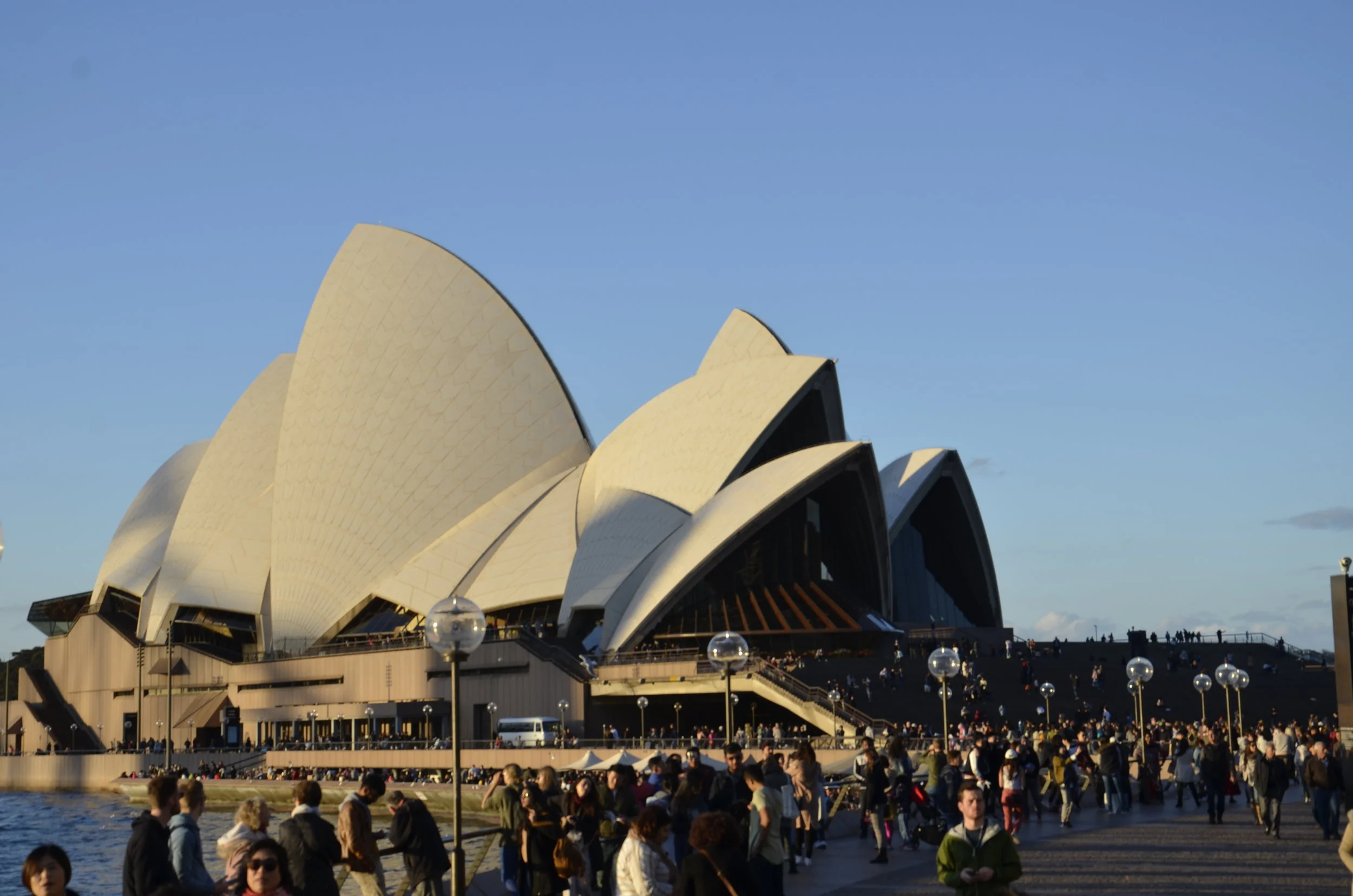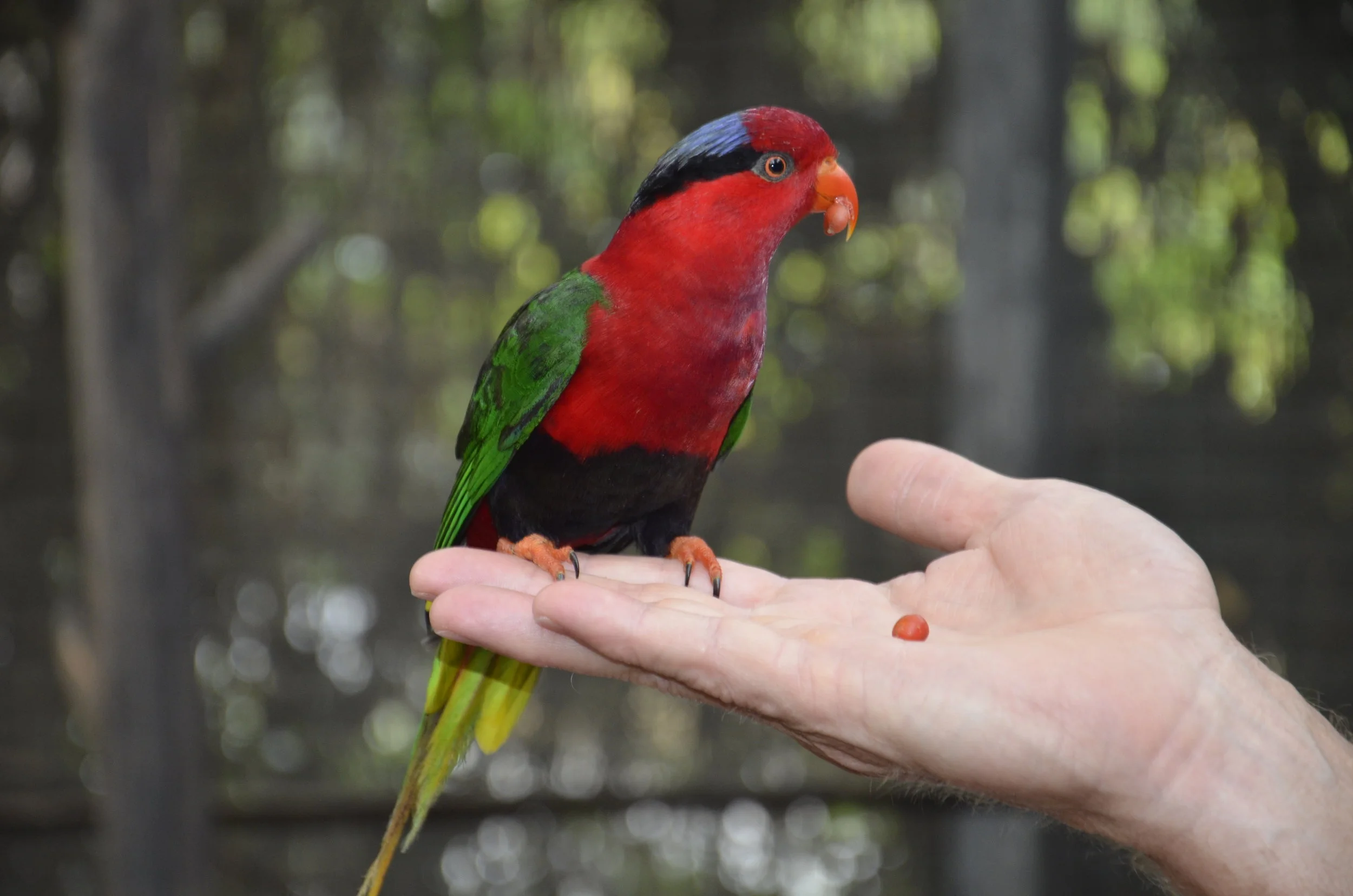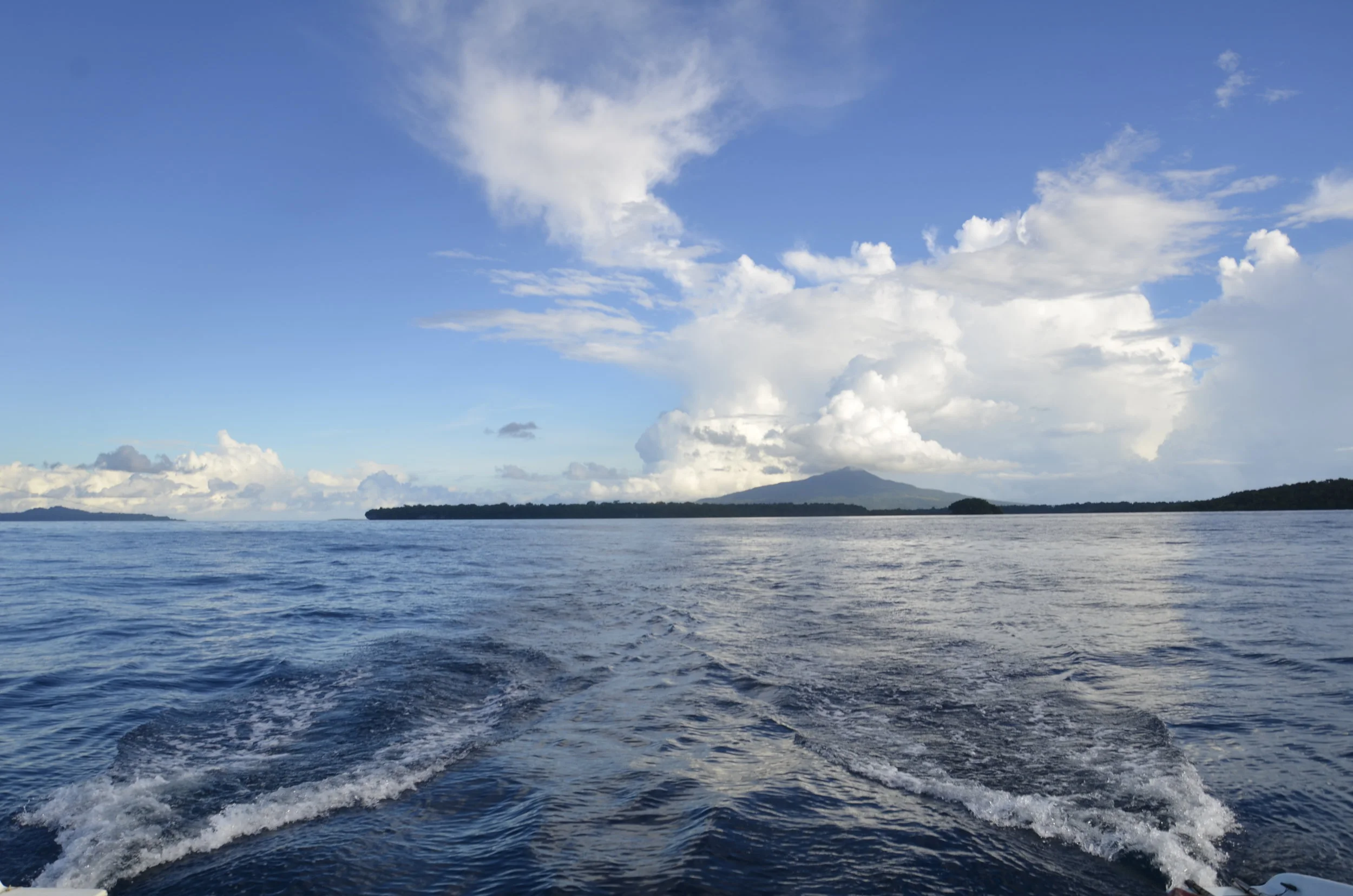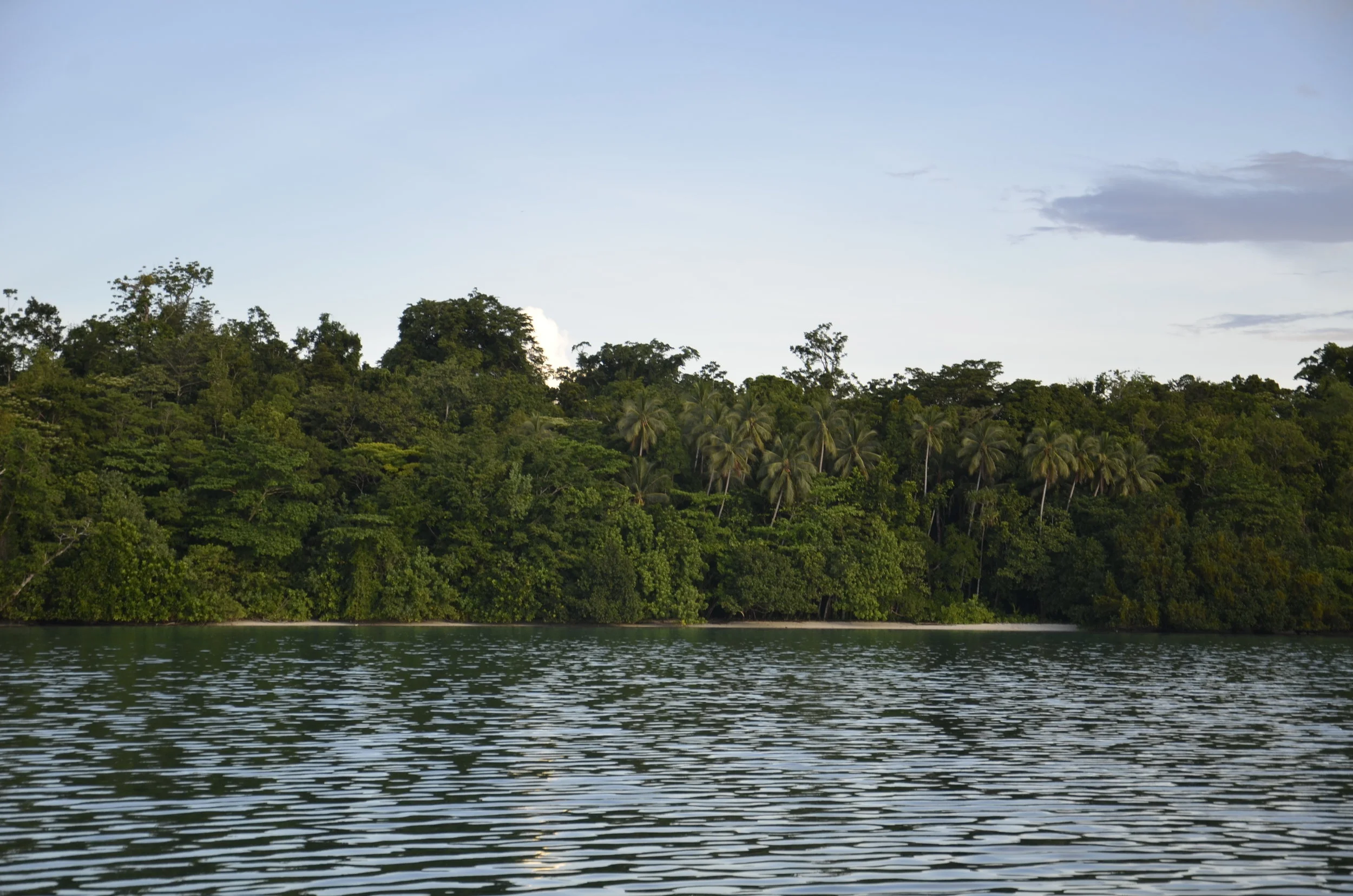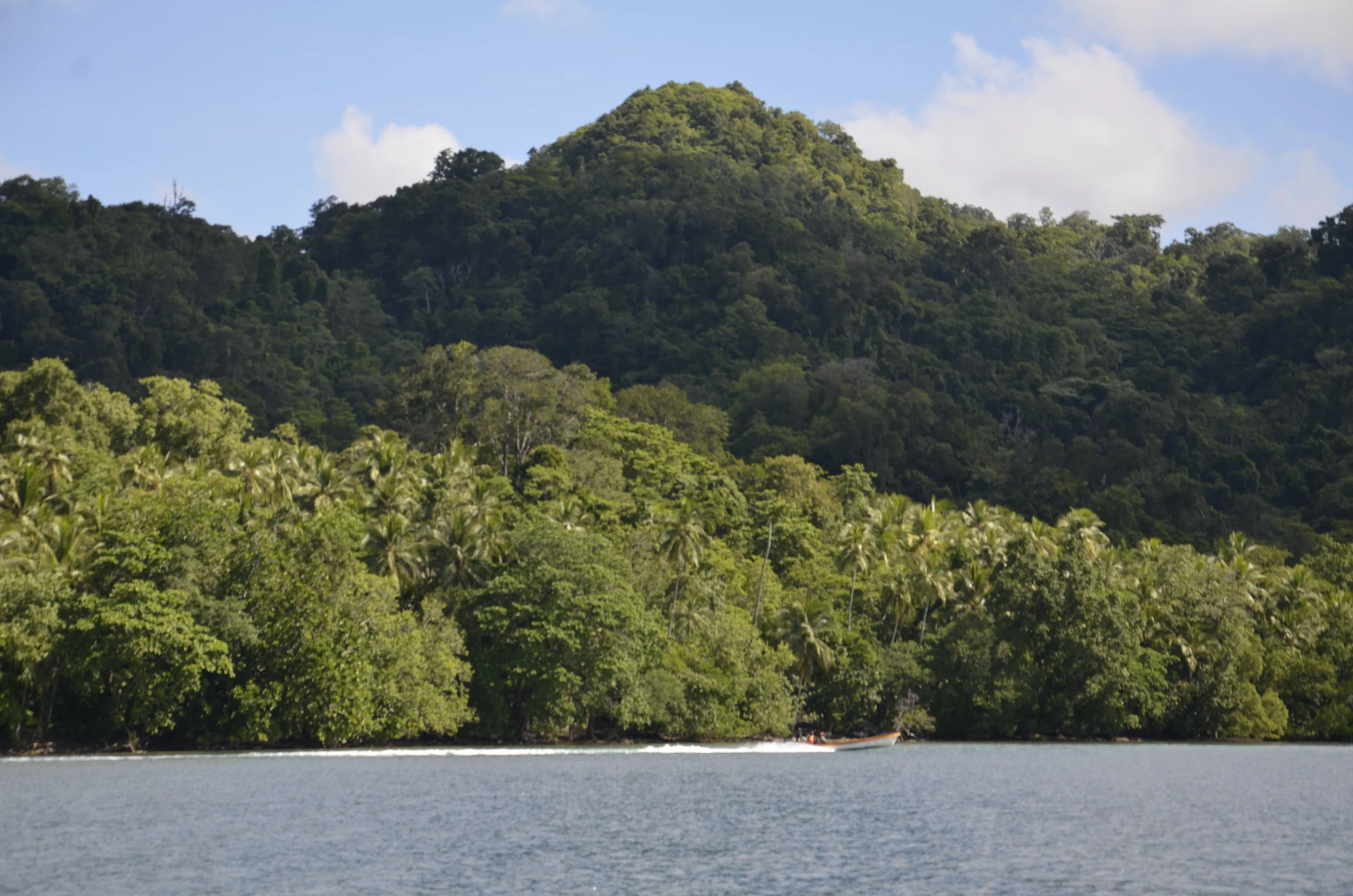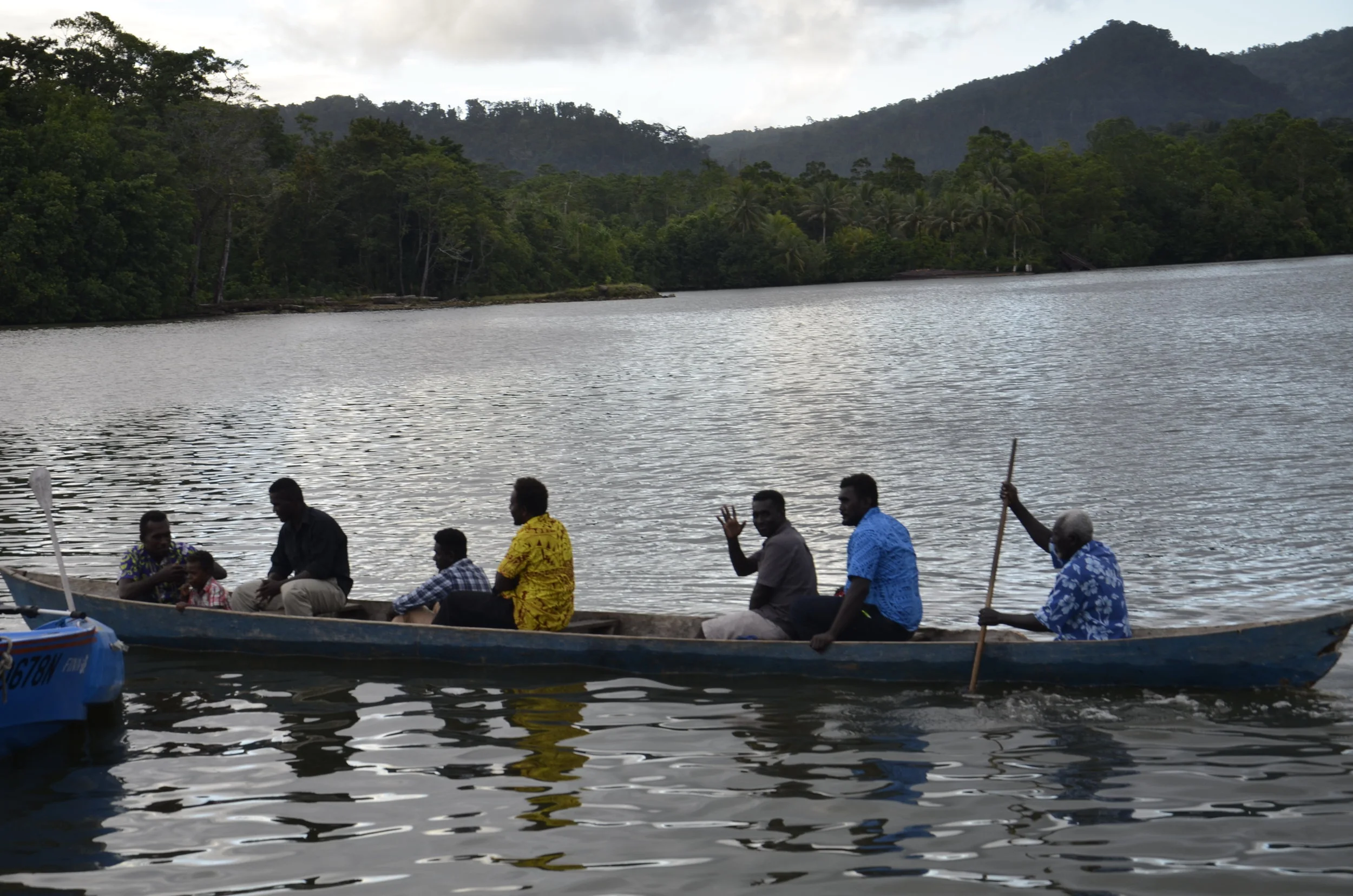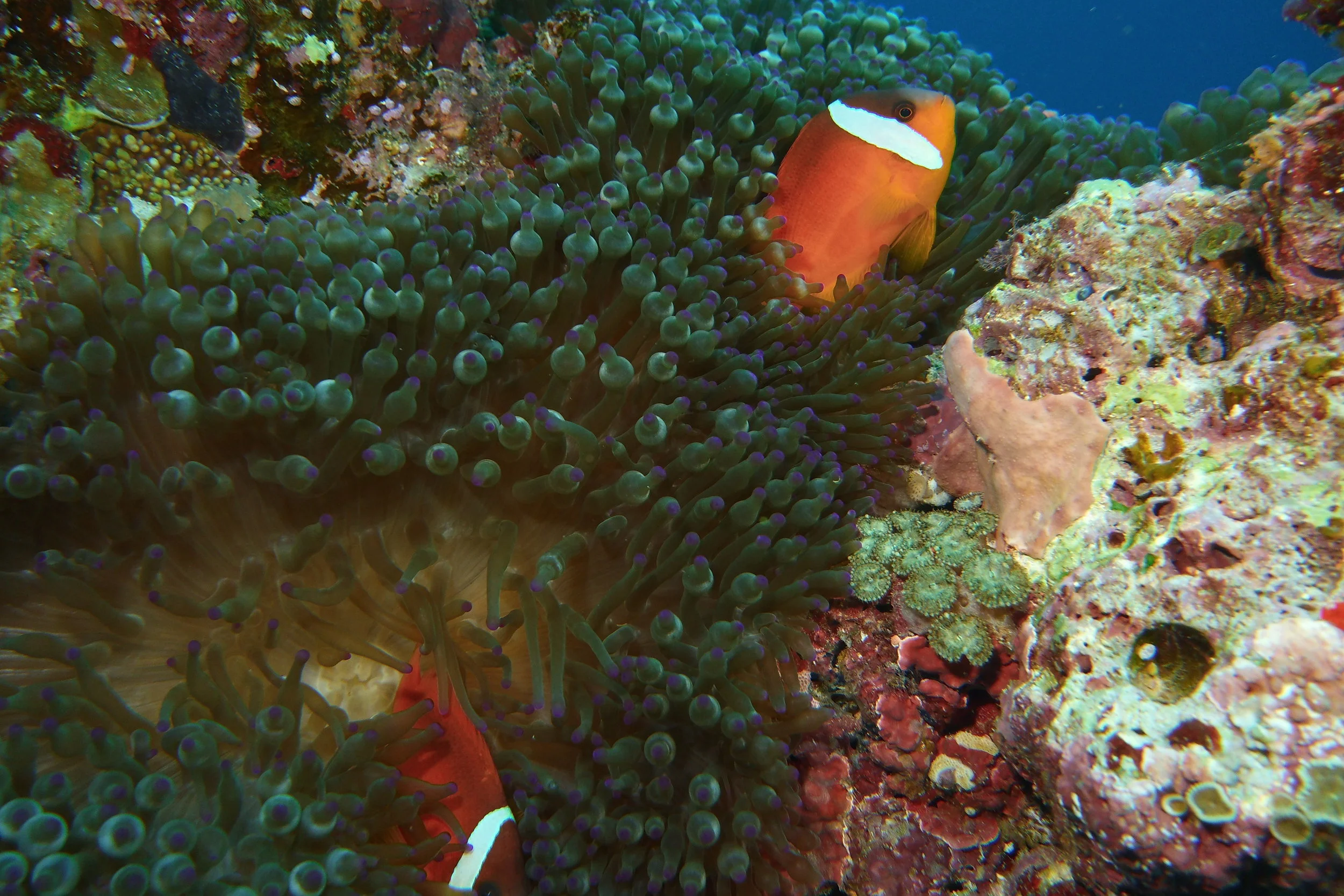Steve Steals the Blog for a Day.
Lisa went off for the day and left the keys in her blog, so I get to sneak in and make a few comments and observations about things that struck me on this trip. :-) First off though, in all of the Humpback excitement, we forgot to post video of our dolphin friends from the Solomons:
As you can see, this was a nose-level view from the front of our relatively fast moving small boat. Luckily for us oldsters, this was during the week in which we were sharing the resort with three young people from the UK, who were eager to capture the moment with both their GoPro and mine:
Beth Poole (at dolphin nose level) was visiting her brother Noah and his friend Ultan Wood, who were near the end of their gap year volunteering at a Solomon Islands' school. In addition to diving, snorkeling, and eating, we enjoyed exploring the differences between "real" english and that which they speak in England. :-)
Things I thought were Interesting
Solomon Islands: 1. Training a dog to live on (and guard) a sailing yacht. 2. How little it costs to mail souvenirs back home, rather than carting them around in your bags (especially convenient when they are made from "plant materials" and would have to be declared upon entering all subsequent countries).
Papua New Guinea: 1. The difference between the international air terminal in Port Moresby (world class) and the adjacent domestic terminal (Greyhound class). 2. The waving of obvious tourists through and around lines and checkpoints at the domestic airports. Weird and uncomfortable, but like the differences between airports, shows the importance of tourist dollars even in this resource rich country. 3. The relief to find out that an airport security guard was the next to use the ATM after I left my card in it. Oops!
Sydney, Australia: 1. After more than a month of travel, it felt so much like home, but so many little differences! 2. Business people dress much nicer for the office than in Nashville. 3. The large number of people doing cross-fit during breaks from work. 4. A crowded speakeasy hidden in an alley and accessed via a "fire escape" down to the basement; many female guests in period clothing from the 1920's. But wait--Sydney never had prohibition, and the bar is named after the US Attorney General in office when the Volstead Act became effective. 5. Cheers, Mate!
Vanuatu: 1. The affordable tropical getaway for families in most parts of Australia--We stood out like an Australian couple visiting Cancun's tourist area. 2. Checked off a new food--stuffed flying fox (aka Fruit Bat) in Port Vila; "tastes like pigeon." 3. Formerly known as the New Hebrides Islands, it was jointly administered by Britain and France before independence in 1980.
Fiji: 1. Despite the political turmoil of the past decade, it stands out as a well-off country among the South Pacific Island nations. 2. Maybe we should have stopped to take a picture when driving over the 180th Meridian (aka, the real "date line," apart from jigjags to keep countries on the same calendar day). 3. On both the liveaboard diveboat and on Taveuni Island, we had the opportunity to dive with gentlemen who began diving before I was born!
Tonga: 1. Less than three hours from New Zealand; 2. We saw and tried to puzzle out a new (to us) game: "Netball." This is sort of basketball, but without dribbling, backboards, or flexibility between positions. 3. The King still has real power here, even though the absolute monarchy was phased out in 2010. 4. Tongans are big people. For example, their Queen was over 6 ft. tall and 300+ pounds when she wowed the crowds at the coronation celebration of the 5' 4" Queen Elizabeth in 1953: http://the-history-girls.blogspot.com/2017/01/the-queen-of-tonga-by-janie-hampton.html?m=1 5. The country is very religious and everything closes on Sunday. Modest dress is also expected; Lisa was among the very rare women who exposed any leg above the knee (despite wearing her longer shorts). 6. It is a resource poor country; its main export is its people. Up to 2/3 of its citizens live abroad and send healthy remittances back home.
In General: 1. School uniforms are the rule in Vanuatu, Fiji, and Tonga, whether for Private or Public schools at all ages. 2. Still seems strange to us Americans that young men match ties with a "skirt" (Sulu/Tupenu/Sarong)--so too, for businessmen/lawyers in Tonga (and likely Fiji). 3. If you order breakfast eggs in the South Pacific, they are served on thick toast, but no accompanying bacon--and if you order a side of bacon, it will not be cooked to a crisp. Think medium rare.... 4. Educational requirements and opportunities vary widely between countries and maybe as much so within countries--inhabitants of small rural islands who are concerned about education must sometimes pay to send their grammar school kids to school on other islands, with trips home (by small boat) each weekend. 5. So-called middleman stereotyping is an unfortunate human universal. I had several conversations with island natives who referred to the ethnic Chinese merchants on their islands in terms that could have been lifted straight out of 19th century stereotypes about Jews. 6. If in doubt, ask if someone is from New Zealand, not Australia. Generally, Kiwis care about such things while Aussies laugh.
Back Home!: 1. Steaks on the grill and heirloom tomatoes. :-) 2. Discovery that letting cars sit for three months during Nashville's summer is a great way to propagate mold in the interior and heat/AC systems. :-(
I hear Lisa coming, so that's it for now


